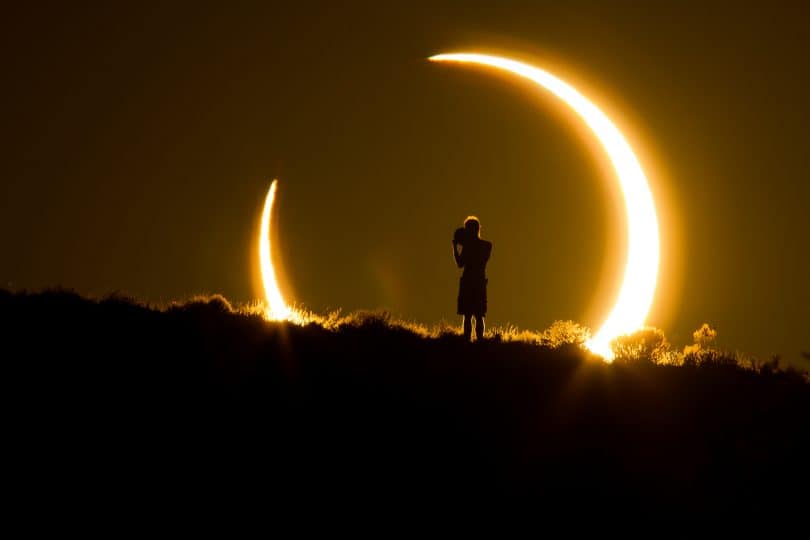Solar eclipse and in particular a total solar eclipse are quite special natural phenomena. Although not uncommon, visibility depends on where you are when it happens. It is going to happen on August 21st, 2017, will be visible on a large strip of the United States and for other countries, the sun will be covered completely. And as we know it is a unique event and will not be repeated soon, surely you want to photograph the total solar eclipse.
The next full solar eclipse will occur on July 2, 2019, in the South Pacific and South America and will not be visible in the United States. In case you are interested, the next eclipse of this type that can be seen in the United States will take place in 2024.
If you are lucky enough to find yourself in one of the areas where you can see the entire eclipse, you will surely want to take photos of the phenomenon. Here we tell you how to do it.
Unlike all other things than photographs, capturing a solar eclipse requires much more than a camera and a lens. To protect the delicate sensor in your camera, just like your eyes, they will need a sunscreen. It is basically a black glass that is designed to limit the amount of light entering your camera and touches the sensor.
Sunscreens cost between $ 20 and $ 250. In addition, you will need a pair of eyeglasses to protect your eyes and are designed exclusively for solar eclipses. Read our guide to make sure your lenses are not fake.
We repeat: Do not look at the solar eclipse directly without adequate protection.
What to bring
When it comes to lenses, it all depends on which camera you have. If you want the solar eclipse approach as it happens, you’ll need a 500mm or larger lens. If you want to include some background in the image to give context, a slow of 70 to 200 mm will serve you better.
If you want to capture a whole sequence, a wide-angle lens will be your best choice and you’ll need a lens between 15 and 20 mm.
It is likely that if there is a smaller aperture (probably not less than f / 5.6), quick lenses will not be a necessity. Use what you have and make better use of it. Remember not to photograph the eclipse without the protection for your lens.
Something else you may need is a tripod, a cable or a launch shutter to shoot the shutter without touching the camera.
The following video was created by the Nikon team in the face of the eclipse of this August 21 and explains brilliantly what you need to capture the solar eclipse and what lenses you will need to get the type of photo you want to take. Canon also has a website dedicated to this topic.
When and where to take photos
Once you have your equipment, you must choose the best place to take the photo. The NASA website has a website dedicated to eclipses. There, you will find the map to see where the path of totality will be. Look here our guide with all the things that you have to take into account if you think to experience the total solar eclipse.
One of the things that you want to know in advance is exactly what configuration the camera should have before the solar eclipse happens so that you do not pass the two minutes of the eclipse trying to decipher which are the best settings.
The exact settings will depend on your location. However, there are several general things to keep in mind. The most important thing is not to put the camera in automatic mode since the scene of an eclipse varies very quickly and chances are that for the camera it is very difficult to adjust so frequently to the different scenes of light.
In order to edit the photo later and make sure you have a good photo, keep the white balance in automatic mode. If you do this and take the picture in RAW format you will not have any problem to increase or decrease the warmth in a long exposure capture.
Another solution is to put your DSLR camera to record a video. If you decide to do this, keep in mind to carry enough MicroSD memories and batteries to avoid running out of ammunition.
For more tips, you can watch this Nikon video.
And if you do not have a professional camera do not worry. The camera on your cell phone is good enough and with adapters, you will get good pictures. However, remember to always have a filter for the camera lens and a pair of eyeglasses.







